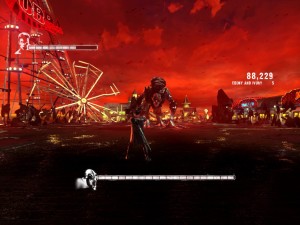One of the major ways that video games became accessible in the 00s was the standardization of controls: Where the different console makers picked a standard format for button placement to be used across game design and affected gameplay.
On one hand making it a lot easier to play multiple games, but on the other hand it makes games that stray from the beaten path stick out like a sore thumb and an important consideration when it comes to building your game.
Controller Wars:
For most of the 80s to early 00s, the different console makers each competed with each other using differently designed gamepads. First as a means of standing out from the competition and second because the industry was very much in its infancy.
This meant as a game designer that you had to shift your control scheme and how the game was played based on what console it was being released on. Another effect this had was restricting games based on the controller or radically changing the scheme.
For instance: If your game was built to make use of the SNES’s four face button scheme, then your game would simply not be playable on the Genesis’ three face button scheme.
The Dreamcast/GameCube era was the last time where each console featured a different scheme. From the PS2-on, both Sony and Microsoft used the same basic control scheme for their gamepad designs: Two analog sticks, d-Pad, two triggers, two back buttons, start and select and four face buttons.
Now designers had a unified scheme to work on, making cross platform ports easier and simplifying control schemes for design. Of course I know that some of you are about to point out Nintendo went in a different direction. Nintendo is the odd man out for this piece with a radically different scheme and aren’t going to be mentioned here due to it.
Understanding the best way of putting together a control scheme is dependent on the hand position of the person using a gamepad. The index fingers and the thumbs are the most used fingers on the hand and have to be taken account of when designing your game.

The Halo series was the first one to present what would become the standard controller scheme for console FPS.
Combined, the index fingers and thumbs rest on the triggers, sticks and the A and X button position on a 360 Gamepad (X and Square if you’re using a Playstation controller).
Taking that into account, the main actions of any video game are commonly associated with those buttons; it’s why FPS games use the right trigger to shoot or platformers use the A button to jump.
Before you even start to think about the control scheme for your game, you need to take into account the countless games that have came before and understand that you are not designing in a vacuum.
Controller Dissonance:
For any video game, we can break down the actions that are going to be assigned to the controller based on the following groups —
Primary: A primary action corresponds to the main verbs that playing the game are based around. Attacking, jumping, and movement are just a few of the examples. Essentially, anything that must be used constantly to beat the game fits here.
Secondary: Actions that assist the primary actions or perform a contextual action: Using a quick item, casting a spell, opening a door and so on.
Using these two groups as a guide, it becomes clear that the primary actions should be mapped to the buttons that are easiest to reach by the player. Or in other words the A and X buttons, triggers and sticks.
It’s important to note that there is one exception to the A and X buttons and that is when you’re playing a platformer. Since the A button is going to be used constantly, it’s better to not make the X button a primary action as the player is going to be focused on using the A button for jumping.
As a basic rule, it’s easier for the player to remember two primary actions split between your hands as opposed to having them both within the same hand’s reach. It’s the same rationale behind placing the face buttons in an ordinal positioning, as it provides a second source of association to make it easier to remember. With the two hand rule, the player can associate that their left hand for all movement based actions while the right is for combat as an example.

Button heavy games like DMC take longer to learn by simple virtue of having a command associated to every button.
Here’s an example of poor control placement and how it impacts a game.
In the title Valids Story: Abyssal City, it’s a metroidvania styled game with a greater emphasis on combat and RPG progression. To attack, you press the X button and jumping is set to A.
But with combat such a focus, blocking is very important to the game. However, the designers set the block button to B on the controller. Now it doesn’t sound so bad when you read it, but you need to understand how finger placement works.
Since you’re holding the controller with your little and ring finger with your middle and index on top of the controller, the thumb is the main finger for all the face buttons. The developers assigned three primary actions (attack, jump block) to the face buttons or to one finger. For quick response, it’s customary to have the dodge button in position to be used by another finger, usually the middle or index fingers.
By setting up the controls this way, more times than not I was busy attacking an enemy when they started their attack animation and instinctively reached for a trigger or top button and got attacked.
There is one exception to having the thumb be responsible for a lot of actions and that is making use of the right analog stick. If you assign the stick to handle one action such as all dodging or camera controls that is okay. The reason is that the player can associate the stick with just one action.
While thinking outside the box is a popular expression when it comes to game design, the same can’t be said about control layout. Familiar control schemes help the learning period of the game by making it easier to grasp the controls. Despite the variety of games out there, last I checked we still only have a total of ten fingers to use with the majority of those fingers holding the gamepad in place.
With so many games being released these days, having an easy to understand control scheme is vital, yet not as apparent as graphics or gameplay are to most designers. You know you have something when the player forgets they’re holding a controller as playing the game feels like second nature and not like those old advertisements where people are swinging their gamepads in the air as if it would matter.



Pingback: Evolving The Game Industry: Saving | Game Wisdom()